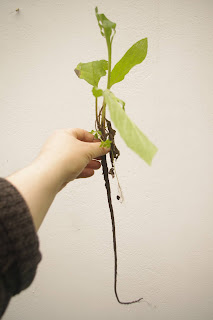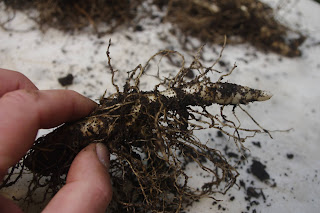This sylvan scene is in the heart of London. Today I visited Edible Landscapes, a forest garden project which occupies a plot in the more municipal surroundings of Finsbury Park.
I've written about forest gardening and permaculture in a number of entries, particularly in reference to Martin Crawford's work in Devon. Suffice to say the basic ethos is to design a largely self-sustaining ecosystem using perennials that can be cropped for food and/or other practical uses.
There are numerous smallholding scale forest gardens in rural parts of Britain; away from the urban centres it's still possible to go "back to the land". In a city like London permaculturalists tend to focus their efforts on community gardens as a way forward. Back gardens and allotments have scope for experimenting with forest gardening principles but needless to say very few people have an area big enough for a forest!
Edible Landscapes grow a wide range of species suited to this approach. There are some familiar native and garden plants among them but many are not much seen outside of botanical gardens if at all. It's good to know that London has places like this.

























